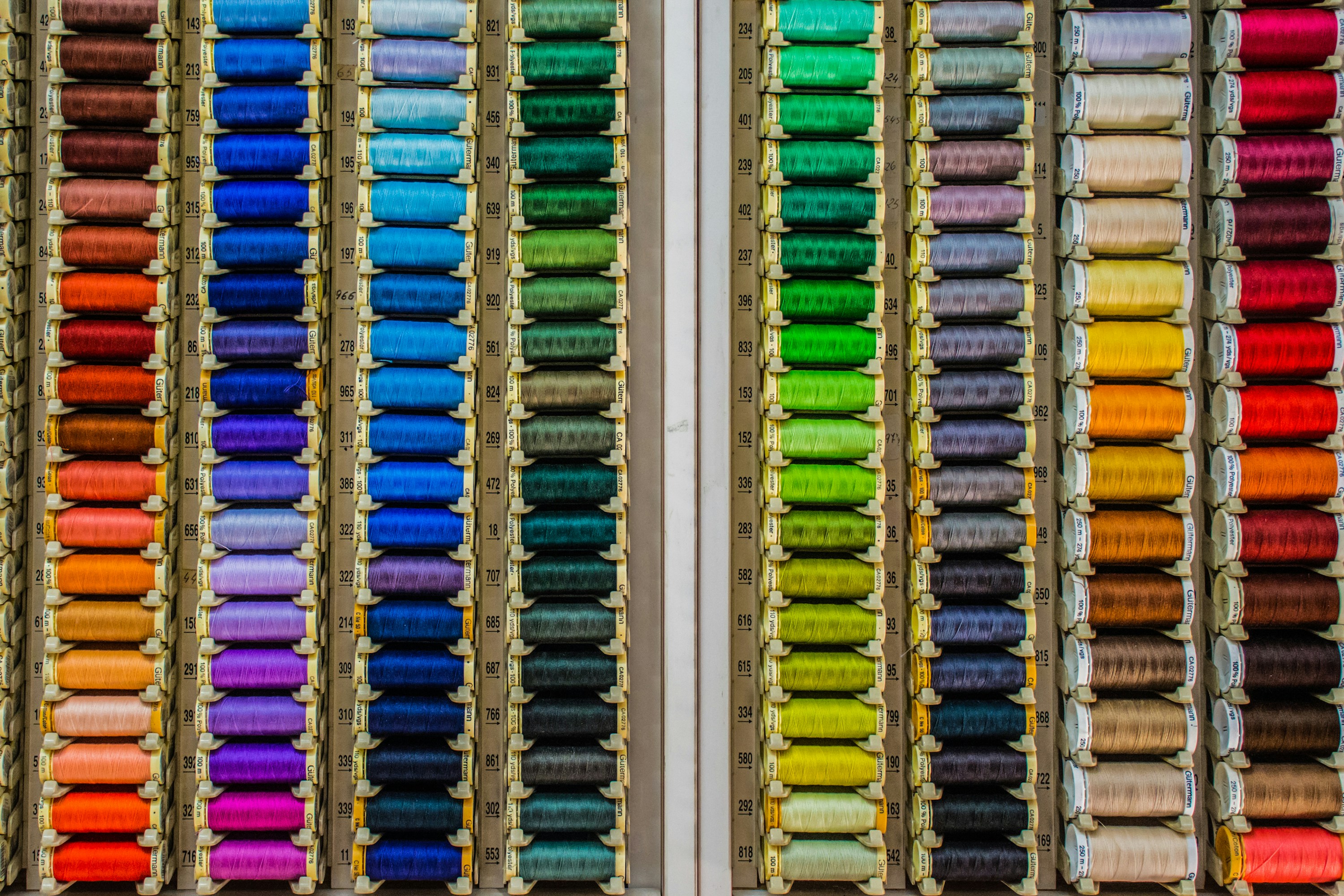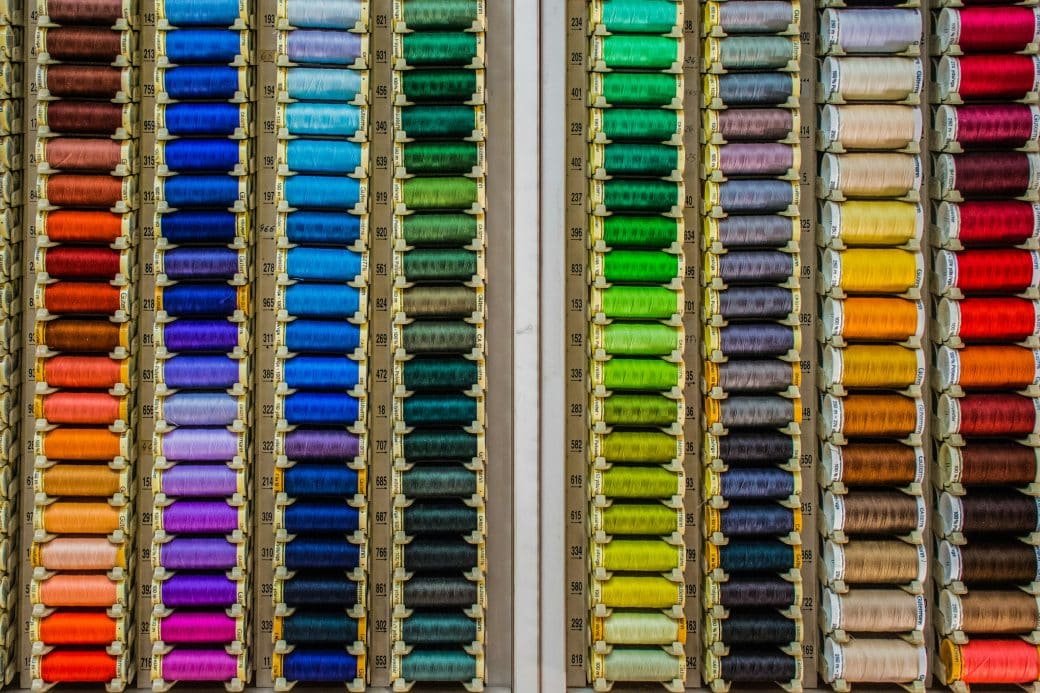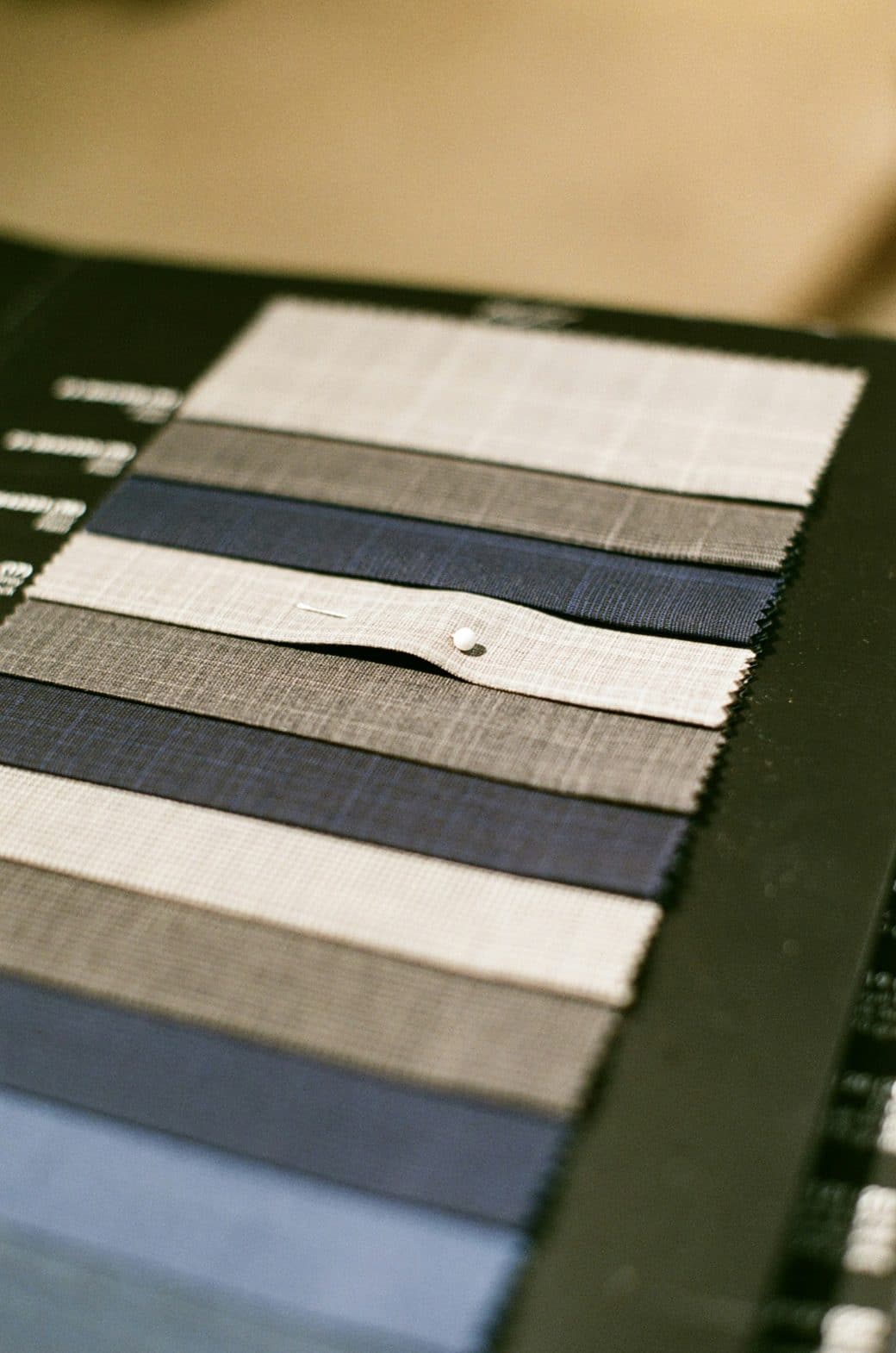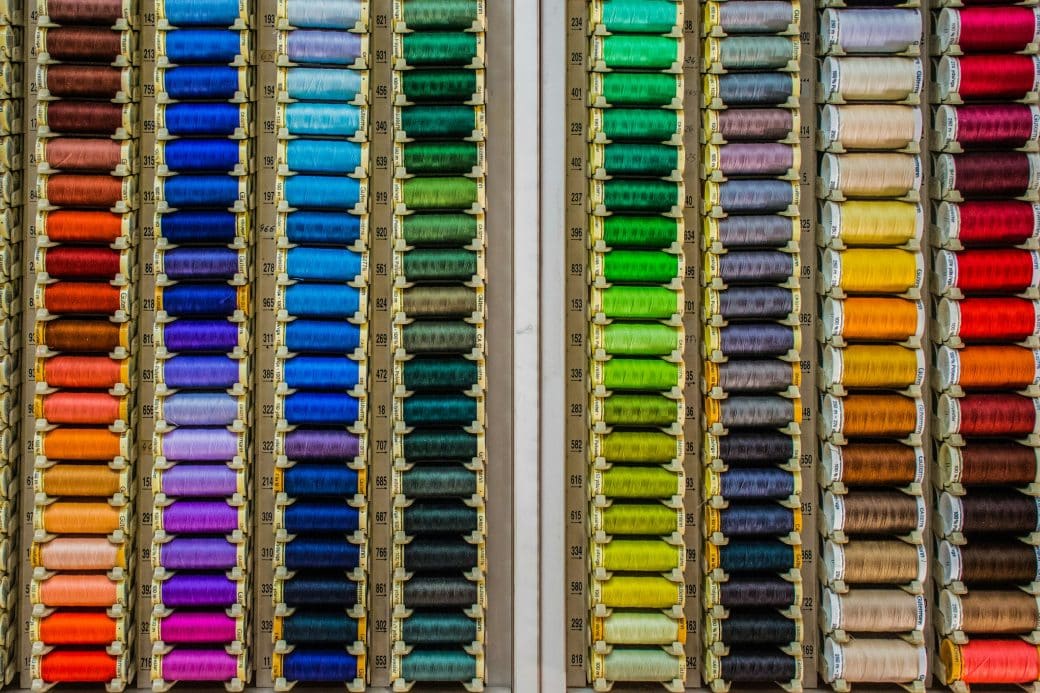Alright, let’s talk about something that truly fascinates me: captivating hand stitching techniques. Honestly, there’s something almost magical about the world of hand stitching, isn’t there? It’s not just about connecting pieces of fabric; it’s an art form, a way to express creativity and, for many, a source of relaxation and joy. From the intricate details of embroidery to the strength and durability of backstitch, each technique has its own charm and purpose. In my journey exploring these age-old yet ever-evolving techniques, I’ve discovered some real gems that are both beautiful and practical. So, I thought it’d be great to share these finds with you, hoping to spark the same excitement and maybe inspire your next project.

The Basics of Hand Stitching
Embarking on a hand stitching journey can be as rewarding as it is enjoyable. It’s not just about pushing a needle through fabric; it’s an art form that hones patience and creativity. Before diving into the myriad of stitches, it’s crucial to lay a solid foundation with the right tools and knowledge.
Investing in Hand Stitching Tools
First off, you’ll need to equip yourself with the basic tools: needles, thread, scissors, and fabric. There’s something truly special about selecting these items, knowing they’ll soon create something beautiful. Personally, I love indulging in a tiny shopping spree at my local craft store, feeling the textures and imagining the possibilities.
Understanding Thread and Needle Sizes
Threads and needles, oh my! It can be a tad overwhelming at first glance with the array of sizes and types. Here’s my take: start with a medium thickness (like an all-purpose thread) and a needle size that feels comfortable in your hand. It’s all about experimenting to see what works best for your project.
Learning How to Thread a Needle
Threading a needle seems simple, but boy, can it be a test of patience, especially for beginners or those of us with not-so-great eyesight. My life hack? Cut the thread at an angle to make it easier and use a needle threader if you’re really struggling. A wet tip can also do wonders.
Getting Familiar with Knot Tying
Whether you’re starting or finishing, you’ll need to secure your thread, and that means knots. I found learning a few basic knots invaluable. A small knot at the thread end starts you off, while a neat technique like weaving the thread end back through a few stitches secures your work without bulk.
Straight Stitch
Straight stitch is like the bread and butter of hand stitching, simple yet versatile.
Exploring the Functionality of Straight Stitch
Straight stitch is, at its core, a basic up-and-down motion through the fabric. But don’t let its simplicity fool you; from constructing to decorating, its applications are vast.
How to Straight Stitch: Step-by-step Guide
Start by pushing the needle up through the fabric, then down a short distance away. Keep your stitches even for a polished look. It’s soothing, repeating this rhythm, feeling the fabric take shape under my hands.
Common Straight Stitch Variations
You can play around with the length and spacing of your stitches for different effects. For instance, lengthening them creates a basting stitch, great for temporary holds. And grouping them tightly can fill areas for a decorative effect.
Projects Utilizing Straight Stitch
From hemming a skirt to designing intricate patterns, straight stitch is amazingly adaptable. I’ve used it to add subtle details to pillowcases, creating a homey, customized look.

Running Stitch
Running stitch, akin to an extended walk in the park, is simple yet profoundly therapeutic.
Understanding Running Stitch and Its Uses
Running stitch is essentially an elongated straight stitch, forming a dashed line. Its uses? Countless! From gathering fabric to basic quilting, it’s a must-know.
Creating a Running Stitch: Detailed Explanation
To create a running stitch, push the needle in and out of the fabric in one go, loading multiple stitches on your needle before pulling through. The rhythm and speed you can achieve feel magical.
Variations of Running Stitch
By adjusting the length and spacing of your stitches, you can create unique patterns. A close-knit running stitch adds strength, while wider spacing is more decorative.
Applying Running Stitch in Different DIY Projects
I’ve found running stitch incredibly useful in gathering fabric for ruffles on aprons and adding decorative borders to tablecloths. Its simplicity lends a handmade charm that’s hard to resist.
Back Stitch
Back stitch, the sturdy backbone of many projects, offers durability and detail all in one.
Introduction to Back Stitch and Its Benefits
Back stitch is like marching one step forward and half a step back. It creates a continuous line, making it stronger than a straight or running stitch, perfect for seams that need to hold.
Practical Guide to Performing a Back Stitch
Start with a single stitch forward. Then, from the front, go back one stitch length and bring the needle up a stitch length forward. Repeat this process, and you’ll see a solid, continuous line forming.
Checking Out Variations of Back Stitch
Playing around with the spacing between stitches can change the look dramatically. Smaller stitches are stronger and more detailed, while larger ones work well for decorative purposes.
Ways to Incorporate Back Stitch in Textile Projects
I’ve used back stitch to outline appliqué on cushions, adding a pronounced edge that really makes designs pop. It’s also my go-to for closures on bags and purses, ensuring they withstand daily use.

Forward Chain Stitch
Forward chain stitch, with its intricate appearance, adds a decorative touch that’s surprisingly easy to achieve.
The Functionality of Forward Chain Stitch
This stitch creates a series of loops that form a chain-like pattern. It’s not just pretty; it’s also quite strong, making it suitable for both decorating and constructing.
Comprehensive Steps to Achieve Forward Chain Stitch
Push the needle through from the back, then catch a small amount of fabric and come back up through the loop before pulling tight. This creates the first ‘link’ in your chain. Continue in this manner for a beautiful, continuous chain.
Exploring Forward Chain Stitch Variations
By altering the length of your stitches or using different thread types, you can create myriad effects. Metallic threads give a shimmering water effect, while varying lengths can add texture.
How to Apply Forward Chain Stitch on your Project
I adore using forward chain stitch to add borders on scarves or decorative panels on bags. It gives a crafted, artisanal feel that’s utterly unique.
Slip Stitch
Slip stitch is the ninja of the stitching world, often invisible but holding everything together with stealth.
Defining a Slip Stitch and Its Uses
Slip stitch is primarily used to join two pieces of fabric together invisibly. It’s a discreet hero, perfect for hemming or attaching lining without any stitches showing.
Process of Curating a Slip Stitch
To slip stitch, you subtly catch a bit of the fabric from each side, pulling gently to bring the pieces together. The key is small stitches and even tension to keep it unseen.
Delving into Slip Stitch Variations
Though typically a hidden stitch, playing with thread color and stitch length can turn it into a decorative element, adding subtle detail to edges.
Decorative and Practical Applications of Slip Stitch
From invisible hems on curtains to creating seamless plush toys, slip stitch is invaluable. It’s my secret weapon for a polished finish on garments and home decor alike.

French Knots
French knots add a delightful pop of texture, mimicking tiny beads of embellishment.
Getting Acquainted with French Knots
These little knots may seem daunting, but once mastered, they’re incredibly satisfying. They’re perfect for adding dimension or creating a point of interest on fabric.
Instructions on How to Create French Knots
Bring the needle up through the fabric, wrap the thread around the needle twice, then push the needle back down close to where it came up. The key is to keep tension on the thread as you pull the needle through to form the knot.
Discovering Different Variations of French Knot
Experimenting with the number of wraps or using different thread thicknesses can vary the knot size. You can create a field of texture or scatter them like stars in the sky.
Incorporating French Knots into Your Design
I’ve sprinkled French knots across linen table runners for a touch of elegance and used them to create dense, textured centers for embroidered flowers. They never fail to elevate a project.
Seed Stitch
Seed stitch, with its simple execution yet complex appearance, beautifully fills spaces with texture.
Unveiling the Beauty of Seed Stitch
Also known as rice stitch, this technique involves making tiny, uniform stitches scattered across a fabric. It’s like sowing seeds, which eventually bloom into a textured field.
Step-by-Step Guide on Creating Seed Stitch
Make small, irregular stitches across your fabric, ensuring they’re spaced and angled randomly. The beauty of seed stitch lies in its seeming randomness and density.
Expounding on Seed Stitch Variations
By adjusting the stitch size and spacing, or by using variegated threads, you can create endless variations that add depth and interest to any piece.
Artistic Implementation of Seed Stitch in Your Artwork
I’ve found seed stitch to be perfect for filling backgrounds or creating gradient effects in embroidery. It brings a lively texture to landscapes or abstract art pieces, offering a detailed layer that rewards a closer look.
Sashiko Stitching
Sashiko stitching, a traditional Japanese technique, offers both functional reinforcement and decorative appeal.
Appreciating the Japanese Technique: Sashiko Stitching
Sashiko, with its distinctive white stitches on indigo fabric, was originally used for mending. Today, it’s celebrated for its aesthetic and cultural significance.
Carrying out Sashiko Stitching: A Walkthrough
Using a long needle and special sashiko thread, stitches are made in a pattern that can be geometric or depict natural scenes. The key is even spacing and straight lines, creating a harmonious design.
Exploring Sashiko Stitching Variations
While traditional sashiko is quite specific in color and pattern, modern adaptations play with colors, thread thickness, and design complexity.
Incorporating Sashiko Stitching in Your Creations
I’ve incorporated sashiko stitching into tote bags and denim repairs, adding a touch of handcrafted beauty while appreciating a piece of Japanese culture.
Cross Stitching
Cross stitching, a gateway into the world of embroidery, marries simplicity with the potential for complexity.
Understanding the Technique of Cross Stitching
Cross stitch, formed by x-shaped stitches, creates pixel-like pictures on grid fabric. It’s accessible to beginners, yet intricate enough for advanced crafters.
Detailed Instructions on Performing Cross Stitch
Following a pattern, create each x with two overlying stitches. It’s like coloring by numbers but with thread, filling in sections to bring a design to life.
Looking at Variations of Cross Stitch
Besides the traditional method, you can experiment with variations like the three-quarter stitch or backstitching for outlines, adding depth and detail to your work.
Examples of Cross Stitch Art
From whimsical bookmarks to elaborate wall hangings, cross stitch art varies widely. I’ve cherished creating personalized gifts, like monogrammed handkerchiefs or framed quotes, that carry a part of me to others.



